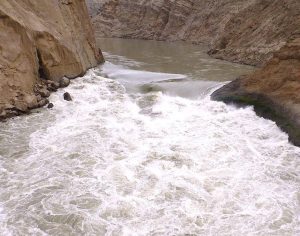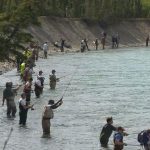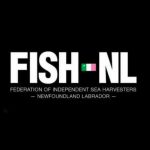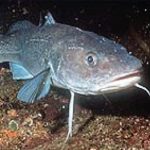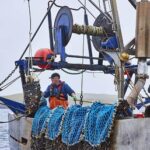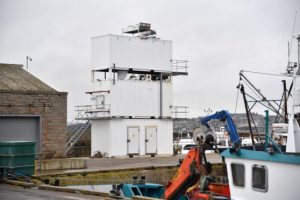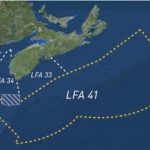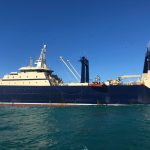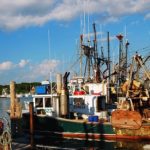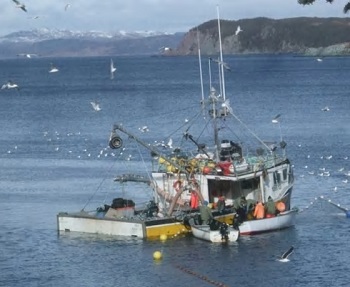Tag Archives: Fraser River

Fisheries official says 2018 saw a ‘reasonably good return’ despite low numbers
The number of sockeye salmon that made it up the Fraser River last fall was lower than originally predicted, prompting a conservation group to blame the federal fisheries regulator for allowing the area to be overfished. “This year, it was the lowest run or spawning return they’ve seen on record on this cycle,” Greg Taylor told CBC Radio’s Daybreak Kamloops host Shelley Joyce. “They were very disappointing,” said Taylor, a senior fisheries advisor for the Watershed Watch Salmon Society.,,, A DFO representative told Joyce on Thursday that, while the numbers were lower than predicted, the return numbers were not out of the ordinary >click to read<20:14
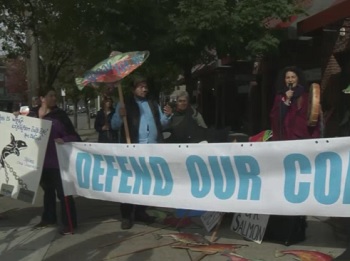
Protesters call for end to Chinook salmon fishing to save endangered orcas
Demonstrators concerned about the fate of the endangered southern resident killer whale population are calling for an end to all commercial fishing of Chinook salmon. There are just 74 of the southern residents remaining, and scientists say a lack of their primary food source, Chinook, is one of the key threats to their survival. On Wednesday, about a dozen protesters descended on Minister of Fisheries and Oceans Jonathan Wilkinson’s North Vancouver constituency office to call for change. Shirley Samples argued the government needs to ban all commercial and recreational Chinook fishing. “Why don’t we subsidize these fishermen? Why don’t we give them money so they can make it through this time when they have to forfeit fishing? There is a solution,”>click to read<10:20
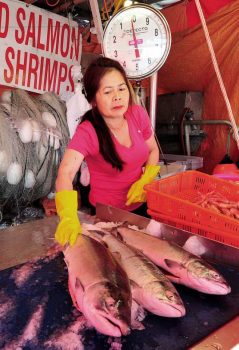
Fraser River sockeye finally catch a break with cooling water temps
Sockeye salmon entering the Fraser River this week will be aided by cooling water temperatures, which should decrease mortality and help them reach their spawning grounds up river in better condition. Commercial fishers are optimistic that the sockeye run will live up to early season predictions as late-season fish start to enter the river. Sockeye migrating into the river this summer are the grandchildren of the record-breaking 2010 run that exceeded 28 million fish. “The fishing we’ve had up to this point has been pretty darn good,” said Chauvel. “You have to make your money in these peak years. The years in between are subsistence, so it’s these sockeye years that put you over the top.” >click to read<22:02
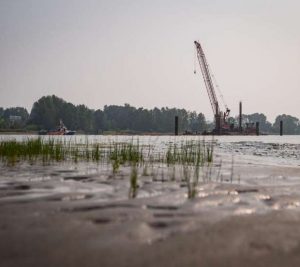
Fraser River salmon have a ‘gauntlet to get through’ as they return to spawn, biologists say
There seems to be a never-ending stream of obstacles facing the Fraser River salmon returning to spawn this year as well as the young preparing to make their own ocean-going journey. On top of warm water, habitat degradation and fishing pressure came the “near misses” of the last week. Last Friday, fire crews fought back a blaze on board a scrap metal barge in the Fraser in Surrey, B.C. Then on Tuesday, authorities sprang into action to contain a spill and remove a tug boat that had flipped and sank in the Fraser River near Deering Island in South Vancouver the night before. >click to read<13:51
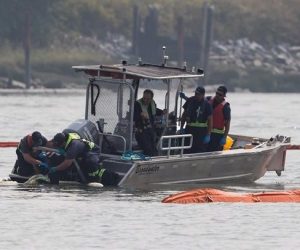
During biggest salmon return in years, up to 22,000 litres of fuel might have spilled into the Fraser River
The smell of diesel filled the air as crews worked to recover a capsized tugboat that may have spilled as much as 22,000 litres of the fuel in the Fraser River between Vancouver and Richmond on Monday night. Canadian Coast Guard spokesperson Dan Bate said it’s unknown what caused the George H. Ledcor tug to capsize around 10 p.m. PDT Monday, just east of Vancouver International Airport. There were four people aboard the vessel and all were rescued by the crew on a nearby tug, Bate said. In a statement, the First Nation said the fuel spill is “of great concern” to the Musqueam people, who have been fishing the biggest salmon return in years on the Fraser River alongside other fishermen. >click to read<20:28
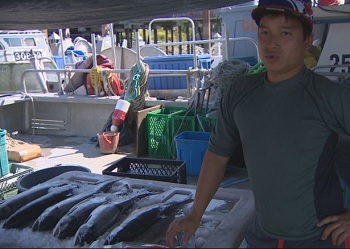
‘Gorgeous fish’: Steveston fishery workers haul in sockeye salmon bounty
Trung Nguyen, selling sockeye off his boat at the Steveston Pier for $8 a pound, has been waiting four years for this moment. Nguyen and other commercial fishery workers returned to the Richmond harbour Thursday with coolers full of salmon after being allowed out on the Fraser River Wednesday to catch salmon. The 2018 run is expected to be the biggest since 2014 and fishery workers had 24 hours to take advantage of the bounty. Strong runs come in four-year cycles and this year’s could eclipse 20 million fish. “Nice and firm. Gorgeous fish,” Nguyen said, showing a potential buyer an example of his haul. “We haven’t had an opening for four years, so this is a big year.” >click to read<09:46
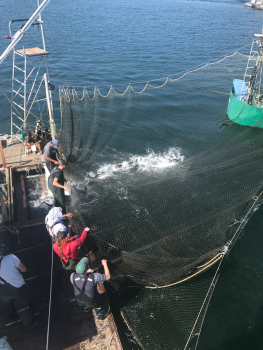
They’re big, they’re fat and thankfully there are finally a whole lot of ‘em!
It’s early, but the Fraser River sockeye salmon run is looking strong for fishermen in U.S. waters. The season started earlier this week for commercial fishermen, with salmon coming in large numbers through the Strait of Juan de Fuca and heading toward Canadian waters. There are a lot of the fish, and they are fat, said Riley Starks, of Lummi Island Wild. The company does reefnet fishing near Lummi Island. On Monday the crew had its best one-day catch ever, he said. >click to read<09:00
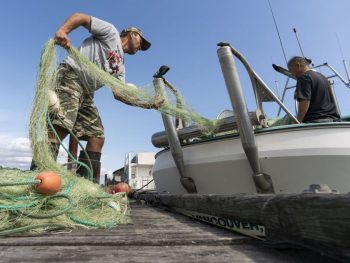
Fraser River sockeye salmon fishing bonanza to start next week
The Fraser River will open next week for its first sockeye salmon run of the season, in a year that is expected to bring in millions of fish for the first time in four years. For local fishermen, it’s better than Christmas. “Oh, we’re super excited,” said Richmond fisherman Roy Jantunen, hours after learning the Pacific Salmon Commission had announced a 24-hour opening from 7 a.m. Wednesday. Jantunen is preparing to go flat out for that full day, without any sleep, to maximize his catch. “It’s great news,” he said. “Last week, we were pulling out the nets and getting them ready. We haven’t used these nets in four years.” >click to read<08:08

Fraser River Sockeye salmon recommended for listing under Species At Risk Act
The recommendation, announced Monday by the Committee on the Status of Endangered Wildlife in Canada, an independent scientific body that advises the federal government, is the most significant acknowledgement to date of the jeopardy facing the iconic red-bodied fish that was once the mainstay of British Columbia’s salmon industry. “It’s a signal of a larger issue,” said Eric Taylor, committee chair and fish ecologist at the University of British Columbia. “The Fraser River is having trouble supporting these fish.” click here to read the story 14:37
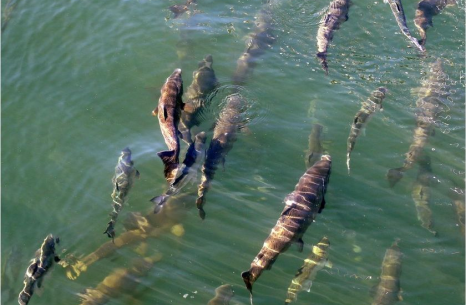
The “blob” is gone, but it’s left a troubling legacy on B.C.’s Pacific coast.
The blob is the popular name for a huge patch of warm water that featured record temperatures — in some cases, three to four degrees Celsius above normal — in the Northeast Pacific starting in 2013 and running through late 2015 and early 2016. Scientists are now concerned that young fish feeding at sea during the blob’s presence did not have enough nutritious food to eat — and that could translate into reduced adult fish to harvest going forward. click here to read the story 08:07
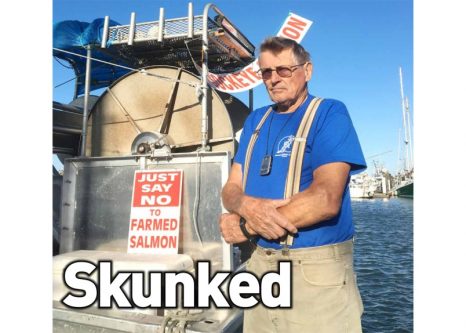
No feast during sockeye famine in Richmond
For a second year in a row, all commercial fishing of the Fraser River’s sockeye salmon has been closed by the Fraser River Panel, the regulatory body that assesses annual salmon runs. Only 1.7 million sockeye are expected to return to the Fraser this year, which is just over a third of the 4.4 million that were expected at the start of the year.,,, The closure should put a premium price on salmon for consumers, according to local fisherman Gus Jacobson. click here to read the story 18:47
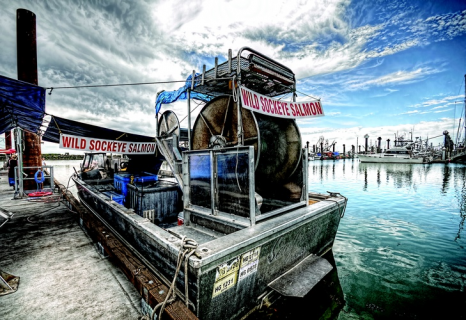
B.C. fishermen facing limited or no openings for sockeye
Commercial fishermen in B.C. won’t be getting many – if any – opportunities to harvest sockeye salmon this year, though they may be able to at least net some pink salmon. This year’s Fraser River sockeye return is expected to be low, based on historical patterns, and the early signs are that they are coming in even lower than forecast. Nass and Skeena River sockeye aren’t doing any better. The only runs that seem to be doing relatively well are Somass River sockeye and Central Coast chum salmon. No commercial opening had been expected for Somass sockeye, but returns were strong enough to allow for a small opening for seine and gillnet fisheries. click here to read the story 09:05
It’s a waiting game for this year’s Fraser River pink salmon run
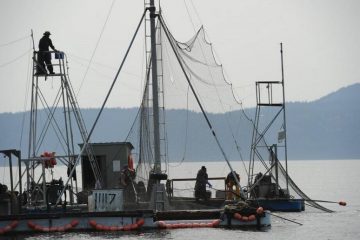 For this year’s Fraser River pink salmon run, the commercial boats hoping to fish in local waters are stuck in a wait-and-see scenario. With run numbers remaining low, the Pacific Salmon Commission’s Fraser River Panel has kept the fishing season closed in both the U.S. and Canadian waters near the mouth of the Canadian River. It’s unclear at this point whether the run is just late or will be much weaker than expected, said Pete Granger, a local reef net fisherman. If it turns out to be a weak run, it will be the second consecutive one for Fraser River pink salmon. click here to read the story 09:03
For this year’s Fraser River pink salmon run, the commercial boats hoping to fish in local waters are stuck in a wait-and-see scenario. With run numbers remaining low, the Pacific Salmon Commission’s Fraser River Panel has kept the fishing season closed in both the U.S. and Canadian waters near the mouth of the Canadian River. It’s unclear at this point whether the run is just late or will be much weaker than expected, said Pete Granger, a local reef net fisherman. If it turns out to be a weak run, it will be the second consecutive one for Fraser River pink salmon. click here to read the story 09:03
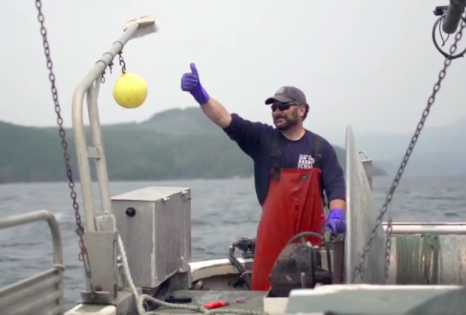
‘Largest’ recorded chum salmon run: 2 million fish overload nets, burden boats
Record numbers of chum salmon — two million fish — returned to B.C’s West Coast this year, bringing good news for fishermen fatigued by word of record lows of Fraser River sockeye. That news got even better with the Johnstone Strait haul hitting 1.3 million fish. “Fraser River chum salmon return is estimated to be two million, the largest return on record,” said Lara Sloan of Fisheries and Oceans Canada in an email to CBC Friday. “Catches in Johnstone Strait were some of the strongest on record. There have also been very strong returns of chum to the Nanaimo River.” Gillnetter Shaun Strobel fishes the west coast of Vancouver Island, down the Johnstone Strait to Nanaimo. “Everybody was catching fish from the top of the straights up towards Alert Bay all the way down to Campbell River. We were catching fish everywhere,” said Strobel, who described loads of fish weighing down boats and threatening to break or sink nets. Read the story here 09:29
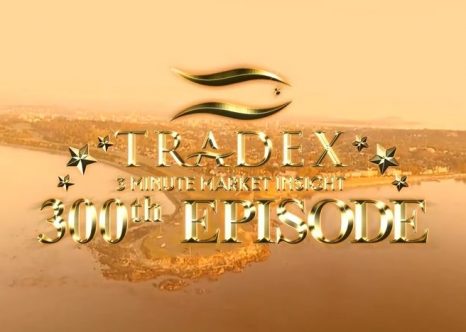
3-Minute Market Insight – What Happened to the Fraser River Sockeye Salmon? We ask DFO, Scientist and Fishermen
For this special 300th episode we dug deep to find answers for the question in the back of everyone’s mind – where has all the Fraser River Sockeye salmon gone? In the final in-season assessment of the Fraser River, the Pacific Salmon Commission reported parts of the Fraser at 2.5 degrees higher than average for this time of year, as well as 15 percent lower water discharge. We spoke with Angela Bates, the Area Director for Fraser and BC Interior at the Department of Fisheries and Oceans in Vancouver, to investigate recent spawning trends. We Asked: The lowest return on record since 1893 is expected this year – what are the factors? Click here to watch the video or click here to read the transcript. Congratulations to Tradex for their 300th episode! 15:18
Warm water blamed for lowest sockeye salmon run on record
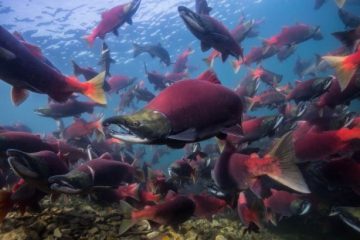 Warm summer temperatures may have Lower Mainlanders feeling good, but they are proving lethal for sockeye salmon. The Pacific Salmon Commission recently revised its already low forecast for sockeye numbers from 2.3 million to 1.1 million in the Fraser River, which would be the lowest number since records have been kept. As of August 12, the DFO has suspended all sockeye fisheries in response. John Reynolds, professor of aquatic ecology and conservation at Simon Fraser University, said three main factors are contributing to this year’s low numbers: a small parental generation; a “blob” of warm water in the Pacific Ocean; and higher-than-normal temperatures in the Fraser River. Sockeye spawn over a four-year cycle, and Reynolds said the last cycle’s already low numbers meant low numbers were a distinct possibility for this year. Read the rest here 11:39
Warm summer temperatures may have Lower Mainlanders feeling good, but they are proving lethal for sockeye salmon. The Pacific Salmon Commission recently revised its already low forecast for sockeye numbers from 2.3 million to 1.1 million in the Fraser River, which would be the lowest number since records have been kept. As of August 12, the DFO has suspended all sockeye fisheries in response. John Reynolds, professor of aquatic ecology and conservation at Simon Fraser University, said three main factors are contributing to this year’s low numbers: a small parental generation; a “blob” of warm water in the Pacific Ocean; and higher-than-normal temperatures in the Fraser River. Sockeye spawn over a four-year cycle, and Reynolds said the last cycle’s already low numbers meant low numbers were a distinct possibility for this year. Read the rest here 11:39
A total shutdown of all salmon fisheries on the Fraser River to conserve sockeye
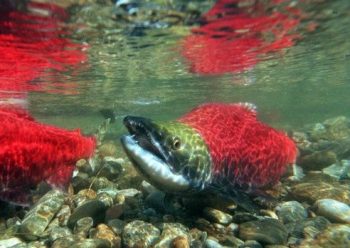 The Fraser River was shut down Thursday at sundown to all salmon fishing due to conservation concerns about sockeye. The notice of “immediate closure” of all salmon fisheries went out from DFO for the tidal and non-tidal sections of the Fraser. “Current run size estimates of Fraser River Summer Run sockeye salmon have resulted in no allowable harvest and a conservation concern,” according to the abrupt notice from Fisheries and Oceans Canada. The Summer run of Fraser sockeye is usually the strongest. Not this year. “The Department’s first priority is to ensure that there is sufficient sockeye returning to the spawning grounds. The Department will manage all fisheries to minimize sockeye impacts and provide priority access to First Nations’ fishing for food, social and ceremonial purposes.” Recreational anglers had been targeting chinook selectively but the risk was considered is too great for accidentally intercepting sockeye. DFO even mentioned it in their notice. Read the rest here 14:23
The Fraser River was shut down Thursday at sundown to all salmon fishing due to conservation concerns about sockeye. The notice of “immediate closure” of all salmon fisheries went out from DFO for the tidal and non-tidal sections of the Fraser. “Current run size estimates of Fraser River Summer Run sockeye salmon have resulted in no allowable harvest and a conservation concern,” according to the abrupt notice from Fisheries and Oceans Canada. The Summer run of Fraser sockeye is usually the strongest. Not this year. “The Department’s first priority is to ensure that there is sufficient sockeye returning to the spawning grounds. The Department will manage all fisheries to minimize sockeye impacts and provide priority access to First Nations’ fishing for food, social and ceremonial purposes.” Recreational anglers had been targeting chinook selectively but the risk was considered is too great for accidentally intercepting sockeye. DFO even mentioned it in their notice. Read the rest here 14:23
Fraser River sockeye run may be a no-go for local fishermen
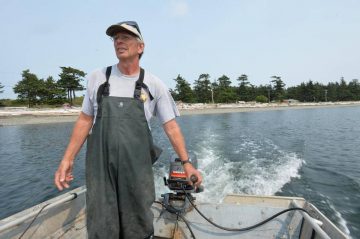 With fish counts remaining extremely low, it’s looking less likely that local commercial and tribal fishermen will get a chance to catch Fraser River sockeye salmon this summer. Fishermen in Canada and the U.S. have been waiting for the green light from the Pacific Salmon Commission to begin fishing for sockeye that are returning to the Fraser River in lower British Columbia. In its most recent assessment on Friday, Aug. 5, the sockeye run remains below expectations and the river remains warmer than normal, both factors in not opening the run. It’s not a surprising result, but still disappointing to fishermen like Pete Granger, who works for Lummi Island Wild. This is a crucial part of the run and if the numbers don’t improve in the next couple of weeks, the season will be lost, he said. Read the story here
With fish counts remaining extremely low, it’s looking less likely that local commercial and tribal fishermen will get a chance to catch Fraser River sockeye salmon this summer. Fishermen in Canada and the U.S. have been waiting for the green light from the Pacific Salmon Commission to begin fishing for sockeye that are returning to the Fraser River in lower British Columbia. In its most recent assessment on Friday, Aug. 5, the sockeye run remains below expectations and the river remains warmer than normal, both factors in not opening the run. It’s not a surprising result, but still disappointing to fishermen like Pete Granger, who works for Lummi Island Wild. This is a crucial part of the run and if the numbers don’t improve in the next couple of weeks, the season will be lost, he said. Read the story here
Bad Fraser River sockeye run has salmon watchers worried
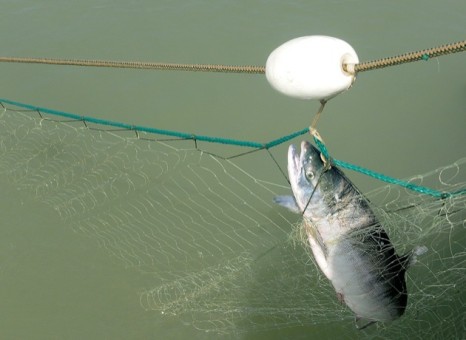 The latest estimate pegs the run size at 2.4 million salmon, barely a third of the 6.8 million mid-range projection of fishery managers. Commercial fishing that was anticipated for August never happened because of the low returns. About 150,000 sockeye have been taken in First Nations food fisheries. “We don’t have the abundance we were expecting,” said Jennifer Nener, Lower Fraser area director for DFO. Last summer, 1.7 million late-run sockeye that were counted as having gone upriver never reached the spawning beds and Taylor fears a repeat is in store. Read the rest here 14:52
The latest estimate pegs the run size at 2.4 million salmon, barely a third of the 6.8 million mid-range projection of fishery managers. Commercial fishing that was anticipated for August never happened because of the low returns. About 150,000 sockeye have been taken in First Nations food fisheries. “We don’t have the abundance we were expecting,” said Jennifer Nener, Lower Fraser area director for DFO. Last summer, 1.7 million late-run sockeye that were counted as having gone upriver never reached the spawning beds and Taylor fears a repeat is in store. Read the rest here 14:52
Salmon fishing shut down on the Fraser River in the Lower Mainland
 The Department of Fisheries and Oceans shut down all salmon fishing in the Fraser River from the mouth to the railway bridge in Mission. Concerns over the number of sockeye salmon prompted the restrictions on commercial, First Nations and recreational activity. The summer runs are coming in with 3.5 million fewer fish than forecasted numbers. Lower river levels and warmer water temperatures expected to lead to a much higher mortality rate at salmon spawning grounds. Video, Read the rest here 09:08
The Department of Fisheries and Oceans shut down all salmon fishing in the Fraser River from the mouth to the railway bridge in Mission. Concerns over the number of sockeye salmon prompted the restrictions on commercial, First Nations and recreational activity. The summer runs are coming in with 3.5 million fewer fish than forecasted numbers. Lower river levels and warmer water temperatures expected to lead to a much higher mortality rate at salmon spawning grounds. Video, Read the rest here 09:08
Fishing boat capsizes spilling oil into Fraser River near Richmond (with video)
 Oil spilled into the Fraser River after a 26-metre fishing boat capsized at a Richmond marina, according to the Department of Fisheries and Oceans. No one was aboard the ship and there are no reports of injuries after the vessel, Western Crusader, overturned at the Shelter Island Marina in Richmond shortly before 8 a.m. A Canadian Coast Guard hovercraft was sent after the Joint Rescue Co-ordination Centre in Victoria received a distress call, Read the rest here 07:29
Oil spilled into the Fraser River after a 26-metre fishing boat capsized at a Richmond marina, according to the Department of Fisheries and Oceans. No one was aboard the ship and there are no reports of injuries after the vessel, Western Crusader, overturned at the Shelter Island Marina in Richmond shortly before 8 a.m. A Canadian Coast Guard hovercraft was sent after the Joint Rescue Co-ordination Centre in Victoria received a distress call, Read the rest here 07:29
Fraser River sockeye run still avoiding U.S. waters, frustrating Whatcom County fishermen
With the sockeye salmon run into the Fraser River nearly complete, the fortunes of local U.S. commercial fishermen haven’t improved much. In recent years about 50 percent of the sockeye run went south through the Strait of Juan de Fuca, putting the fish in U.S. waters. This season nearly the entire run has gone around the north part of Vancouver Island through Johnstone Strait into Canadian waters. Read the rest here 11:35
Sockeye market volatile, say industry experts – Boat prices dropping, What about Wholesale/Retail?
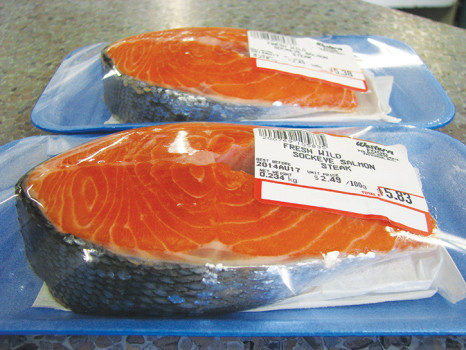 A surge in sockeye numbers and fishing runs in the Fraser river has prices dropping for the fresh catches, but retailers and wholesalers alike say good deals on the fish are unpredictable. Read more here 17:01
A surge in sockeye numbers and fishing runs in the Fraser river has prices dropping for the fresh catches, but retailers and wholesalers alike say good deals on the fish are unpredictable. Read more here 17:01
Monster sockeye run starting to enter Fraser River
 Sockeye by the thousands could start swimming up the Fraser River shortly. The prized red sockeye entering the river now are the offspring of the 2010 run — the largest sockeye return on the Fraser in the last 100 years. The computer modelling puts the estimated Fraser return total anywhere between about 7 million and 70 million sockeye. Read more here 16:02
Sockeye by the thousands could start swimming up the Fraser River shortly. The prized red sockeye entering the river now are the offspring of the 2010 run — the largest sockeye return on the Fraser in the last 100 years. The computer modelling puts the estimated Fraser return total anywhere between about 7 million and 70 million sockeye. Read more here 16:02
Giant sturgeon caught on Fraser river…again
 On Thursday, Paul Jarvis, and his dad, Don, were on the first day of a three-day father-son fishing trip when Paul hooked into one of the largest white sturgeon ever caught on the Fraser River. The giant fish measured more than three-and-a half metres long and one-and-a-half metres in girth. Since it was never removed from the water, its weight was calculated, based on a mathematical formula, at 400 kilograms. Read more here 09:51
On Thursday, Paul Jarvis, and his dad, Don, were on the first day of a three-day father-son fishing trip when Paul hooked into one of the largest white sturgeon ever caught on the Fraser River. The giant fish measured more than three-and-a half metres long and one-and-a-half metres in girth. Since it was never removed from the water, its weight was calculated, based on a mathematical formula, at 400 kilograms. Read more here 09:51
The Fraser River could have the biggest salmon run in B.C. history this summer, with up to 72 million sockeye returning.
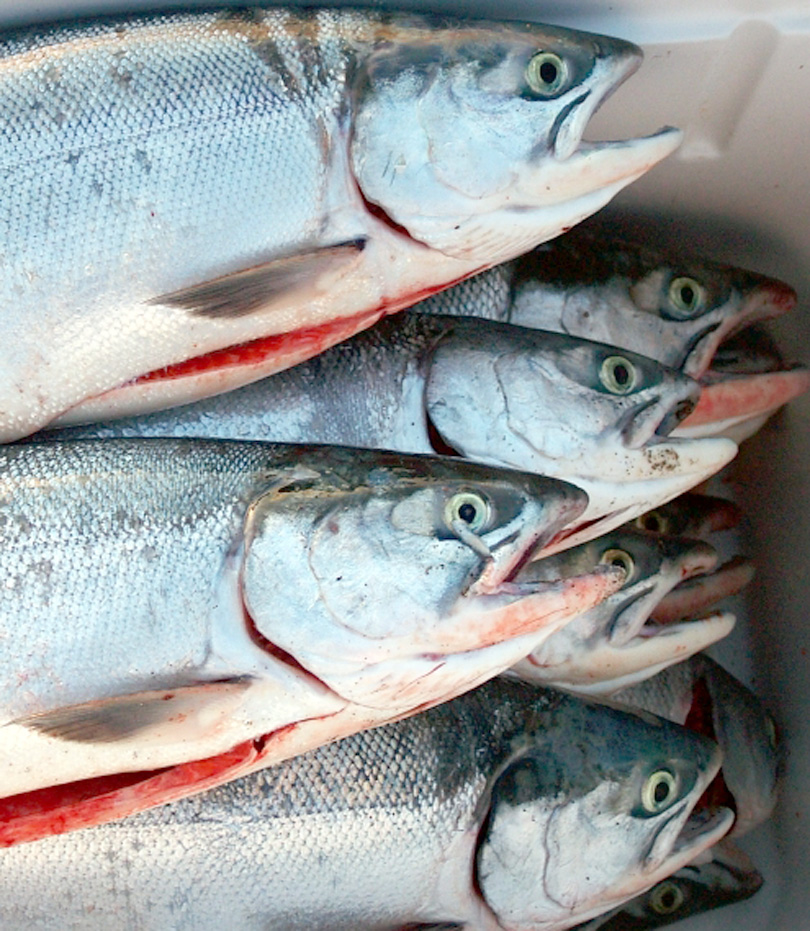 “I mean, it’s hard to fathom,” Rollie Rose, president of Sooke Salmon Charters Ltd., said in an interview of the magnitude of the projections from the Department of Fisheries and Oceans. He told colleagues in a recent e-mail: “The news could not be any better … you will see fishing this year better than you have seen in your lifetime.” Read more here globeandmail 20:33
“I mean, it’s hard to fathom,” Rollie Rose, president of Sooke Salmon Charters Ltd., said in an interview of the magnitude of the projections from the Department of Fisheries and Oceans. He told colleagues in a recent e-mail: “The news could not be any better … you will see fishing this year better than you have seen in your lifetime.” Read more here globeandmail 20:33
British Columbia: Low salmon numbers keep nets out of the Fraser
They would rather be out on the Fraser River chasing sockeye, but instead local commercial and sport fishermen alike were engaged in their second-favourite pastime Tuesday afternoon – cursing Fisheries and Oceans Canada. moremapleridgenews 12:00
Sparse Fraser River sockeye run is an echo of 2009
 Four years after a salmon run so disastrous it sparked a federal inquiry, fisheries managers are watching with concern as sockeye trickle into the Fraser in lower numbers and later in the season than anticipated. @globeandmail
Four years after a salmon run so disastrous it sparked a federal inquiry, fisheries managers are watching with concern as sockeye trickle into the Fraser in lower numbers and later in the season than anticipated. @globeandmail






